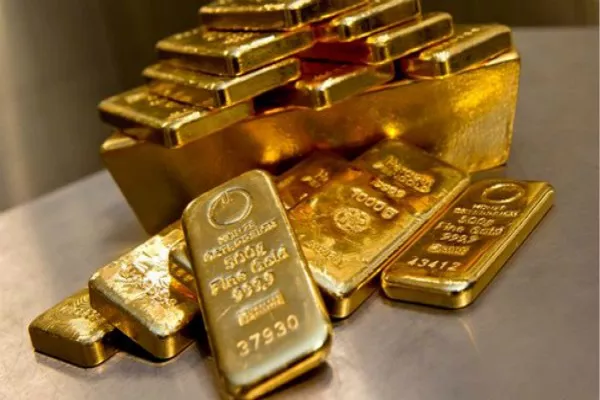Gold has historically been regarded as a safe-haven asset, often sought after in times of uncertainty. Recently, many investors and analysts have noticed a significant increase in gold prices, raising questions about the underlying factors contributing to this upward trend. This article delves into the reasons behind the rising value of gold, exploring economic indicators, geopolitical events, and market dynamics that have driven its price higher.
1. Historical Context of Gold Prices
Gold as a Safe-Haven Asset
Gold has been a symbol of wealth and stability for thousands of years. Its appeal lies in its intrinsic properties—it’s durable, divisible, and easily recognizable. Historically, gold has served as a reliable store of value and a hedge against inflation and currency devaluation.
Price Trends Over Time
Examining historical price trends reveals that gold often experiences cycles of price increases and decreases. Understanding these patterns helps contextualize the current surge in gold prices, particularly in relation to economic and geopolitical events.
2. Economic Factors Driving Gold Prices Up
Inflation Concerns
One of the primary drivers of gold prices is inflation. As the cost of living rises, the purchasing power of currency declines, making gold an attractive option for preserving value. Investors often flock to gold as a hedge against inflation, leading to increased demand and higher prices.
Low-Interest Rates
When central banks maintain low-interest rates, the opportunity cost of holding gold decreases. With lower returns on savings accounts and bonds, investors are more inclined to allocate their funds to gold, boosting its price. This phenomenon has been particularly evident in recent years, with central banks globally adopting accommodative monetary policies.
Economic Uncertainty and Recession Fears
Economic instability and recession fears can lead to increased demand for gold. During periods of uncertainty, investors tend to seek safe-haven assets to protect their wealth. Economic downturns, high unemployment rates, and unstable financial markets often drive investors toward gold, pushing its price higher.
Currency Weakness
The value of gold is inversely related to the strength of major currencies, particularly the U.S. dollar. When the dollar weakens, gold becomes cheaper for holders of other currencies, increasing its global demand. This inverse relationship can lead to significant price increases for gold.
3. Geopolitical Factors Influencing Gold Prices
Global Political Tensions
Geopolitical instability, including conflicts, trade disputes, and diplomatic tensions, often drives investors to seek refuge in gold. Events such as wars, terrorism, and political upheaval can create uncertainty in global markets, prompting increased demand for gold as a safe-haven asset.
Central Bank Policies and Purchases
Central banks around the world play a significant role in the gold market. When central banks increase their gold reserves, it signals confidence in gold as a long-term asset. This buying activity can create upward pressure on prices, as it demonstrates institutional belief in gold’s value.
Trade Wars and Economic Sanctions
Trade disputes and economic sanctions can disrupt global supply chains and create market volatility. During such times, gold often gains appeal as a secure investment, leading to price increases. The unpredictability of international trade relations can have a direct impact on gold demand.
4. Market Dynamics and Investor Behavior
Supply and Demand Dynamics
The fundamental principles of supply and demand are crucial in understanding gold price fluctuations. When demand exceeds supply, prices rise. Factors such as mining production rates, recycling, and global demand for gold can all impact its market dynamics.
Exchange-Traded Funds (ETFs)
The rise of gold ETFs has transformed how investors access gold. When ETFs see significant inflows, it often indicates increased investor interest in gold, driving prices up. Conversely, outflows can lead to price declines. The trading behavior of ETFs can thus have a profound impact on gold prices.
Speculative Trading and Market Sentiment
Market sentiment and speculative trading can lead to short-term price fluctuations in gold. Positive news about economic conditions, inflation fears, or geopolitical tensions can create a bullish sentiment, encouraging investors to buy gold and pushing its price higher.
5. Technological and Industrial Demand for Gold
Industrial Applications
While gold is primarily known for its investment and jewelry uses, it also has applications in electronics, dentistry, and medicine. As technology continues to advance, the demand for gold in these sectors may rise, contributing to its overall value.
Innovations in Gold Mining
Advancements in mining technology can impact supply dynamics. Improved efficiency and new discoveries can lead to higher production levels, but in a market with rising demand, these factors can also contribute to higher prices.
6. Conclusion
The recent surge in gold prices is influenced by a confluence of economic, geopolitical, and market factors. As investors navigate uncertainty, inflation concerns, and geopolitical tensions, gold continues to be viewed as a safe haven and a hedge against volatility. Understanding these dynamics is crucial for anyone looking to invest in gold or comprehend the current market landscape. While gold’s value may fluctuate, its role as a cornerstone of financial stability remains strong.
Related topics:
- Understanding the Decline: Why Is Gold Going Down in Value?
- Why Is Silver Cheaper Than Gold? The Price Disparity
- Krugerrand Gold Coins: History, Value, and Significance


